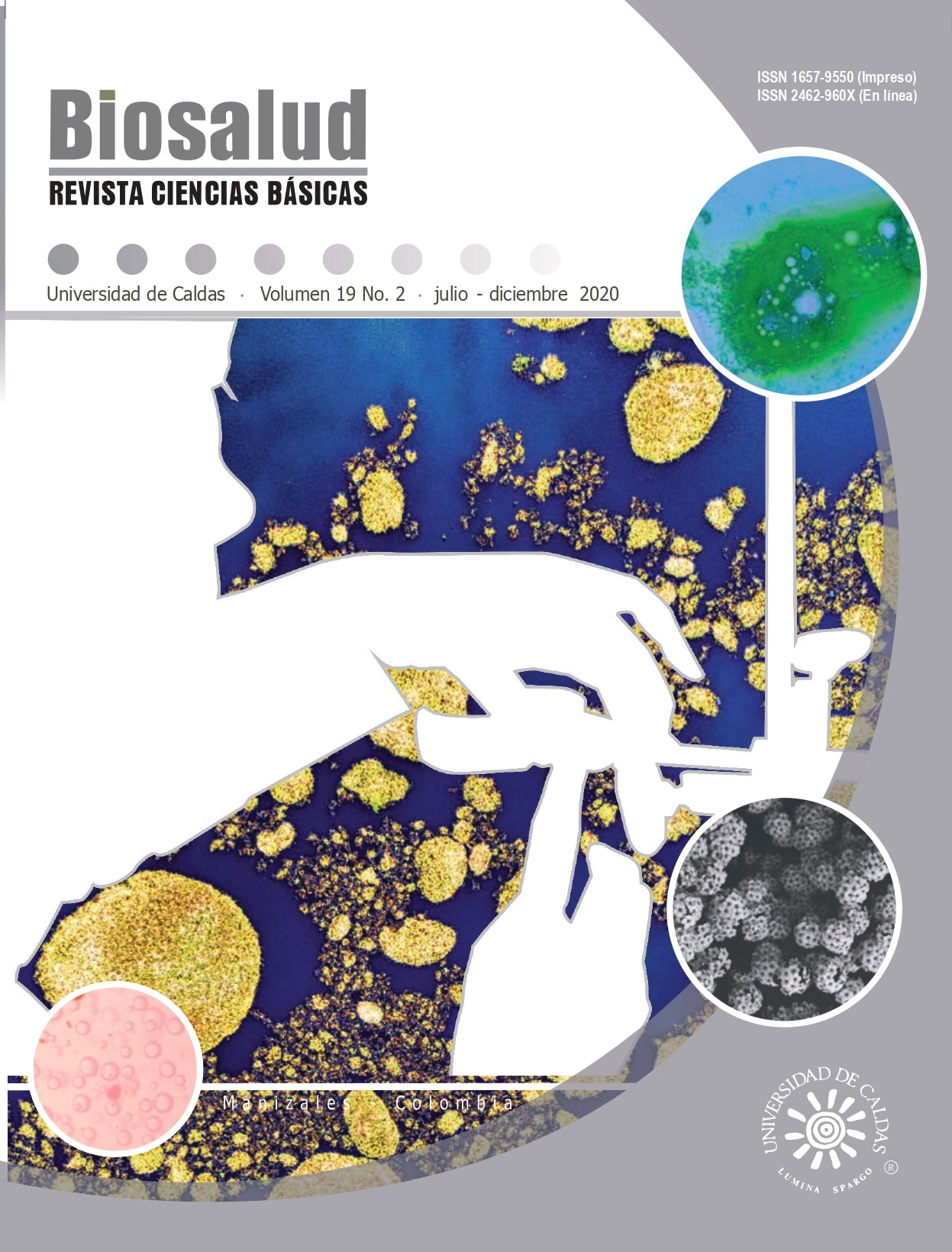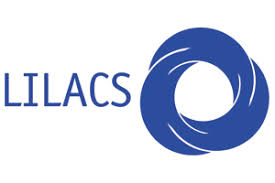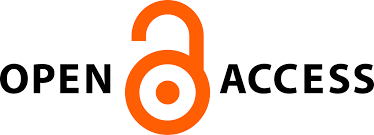Autores/as
Resumen
Introducción: En los últimos años, las conmociones cerebrales relacionadas con el deporte se han convertido en un problema de salud pública. Aunque, las afectaciones neurológicas asociadas a las conmociones a menudo desaparecen espontáneamente en poco tiempo, es necesario estudiar los efectos a mediano y largo plazo en funciones fisiológicas que involucran componentes auditivos, vestibulares y cognitivos desde una perspectiva fonoaudiológica y comunicativa. Objetivo: Documentar los efectos de las conmociones cerebrales sobre los procesos comunicativos de la audición, el lenguaje y el habla de deportistas. Materiales y métodos: Se realizó una búsqueda de literatura en las bases de datos PubMed, ASHA: American Speech-Language-Hearing Association y Google Scholar sobre conmociones cerebrales asociadas al deporte y sus consecuencias a nivel auditivo-vestibular, cognitivo-lingüístico y de procesos motores del habla. Se seleccionaron artículos publicados en los últimos 5 años que cumplían con los criterios de inclusión. Resultados: Los estudios muestran que las conmociones se asocian con alteraciones en el procesamiento auditivo central, pérdida auditiva neurosensorial, hiperacusia, problemas de equilibrio y deficiencias en la comprensión y producción del lenguaje. Estas deficiencias conductuales, cognitivas y lingüísticas comprometen la capacidad de comunicación e interacción interpersonal de los deportistas. Conclusiones: Las conmociones cerebrales afectan directamente los procesos de comunicación e interacción interpersonal debido a las deficiencias conductuales, impactos en las funciones cognitivas, lingüísticas y sociales que comprometen la capacidad de comunicación. Se deben adecuar los instrumentos de evaluación fonoaudiológica y hacer inmersión en campos de acción poco explorados, como lo es el de las conmociones cerebrales asociadas al deporte.
Palabras clave
Citas
2. Alkathiry, A. A., Kontos, A. P., Furman, J. M., Whitney, S. L., Anson, E. R., & Sparto, P. J. (2019). Vestibulo-Ocular Reflex Function in Adolescents With Sport-Related Concussion: Preliminary Results. Sports health, 11(6), 479–485. https://doi.org/10.1177/1941738119865262
3. Alosco, M. L., Barr, W. B., Banks, S. J., Wethe, J. V., Miller, J. B., Pulukuri, S. V., Culhane, J., Tripodis, Y., Adler, C. H., Balcer, L. J., Bernick, C., Mariani, M. L., Cantu, R. C., Dodick, D. W., McClean, M. D., Au, R., Mez, J., Turner, R. W., 2nd, Palmisano, J. N., Martin, B., …DIAGNOSE CTE Research Project (2023). Neuropsychological test performance of former American football players. Alzheimer’s research & therapy, 15(1), 1. https://doi.org/10.1186/
s13195-022-01147-9
4. Assi, H., Moore, R. D., Ellemberg, D., & Hébert, S. (2018). Sensitivity to sounds in sport-related concussed athletes: a new clinical presentation of hyperacusis. Scientific reports, 8(1), 9921. https://doi.org/10.1038/s41598-018-28312-1
5. Babula, G., Warunek, E., Cure, K., Nikolski, G., Fritz, H., & Barker, S. (2023). Vestibular Rehabilitation as an Early Intervention in Athletes Who are Post-concussion: A Systematic Review. International journal of sports physical therapy, V18(3), 577–586. https://doi.org/10.26603/001c.75369
6. Banks, R. E., Beal, D. S., & Hunter, E. J. (2021). Sports Related Concussion Impacts Speech Rate and Muscle Physiology. Brain injury, 35(10), 1275–1283. https://doi.org/10.1080/02699052.2021.1972150
7. Bashir, K., Yousuf, A., Zaki, H. A., & Elmoheen, A. (2023). Benign Paroxysmal Positional Vertigo (BPPV) After Concussion in Two Adolescent Players During a Rugby Game. Cureus, 15(1), e33402. https://doi.org/10.7759/cureus.33402
8. Białuńska, A., & Salvatore, A. P. (2017). The auditory comprehension changes over time after sport-related concussion can indicate multisensory processing dysfunctions. Brain and behavior, 7(12), e00874. https://doi.org/10.1002/brb3.874
9. Bowman, T. G., Thibault, R., Radack, B. M., Davis, A., & Elam, P. (2024). Clinical outcomes for various benign paroxysmal positional vertigo (BPPV) diagnoses in adolescents and young adults with recent concussions. Physical therapy in sport : official journal of the Association
of Chartered Physiotherapists in Sports Medicine, 65, 90–94. https://doi.org/10.1016/j.ptsp.2023.12.004
10. Brown, J., & Knollman-Porter K. (2019). Evaluating cognitive-linguistic deficits postconcussion in adults. Top Lang Disorder,39(3),239–56. 239–256. https://alliedhealth.ceconnection.com/ovidfiles/00011363-201907000-00003.pdf
11. Büttner, F., Howell, D. R., Ardern, C. L., Doherty, C., Blake, C., Ryan, J., Catena, R., Chou, L.S., Fino, P., Rochefort, C., Sveistrup, H., Parker, T., & Delahunt, E. (2020). Concussed athletes walk slower than non-concussed athletes during cognitive-motor dual-task assessments but not during single-task assessments 2 months after sports concussion: a systematic review and meta-analysis using individual participant data. British journal of sports medicine, 54(2), 94–101.https://doi.org/10.1136/bjsports-2018-100164
12. Caccese, J. B., Santos, F. V., Yamaguchi, F. K., Buckley, T. A., & Jeka, J. J. (2021). Persistent Visual and Vestibular Impairments for Postural Control Following Concussion: A Cross-Sectional Study in University Students. Sports medicine (Auckland, N.Z.), 51(10), 2209–2220. https://doi.org/10.1007/s40279-021-01472-3
13. Christy, J. B., Cochrane, G. D., Almutairi, A., Busettini, C., Swanson, M. W., & Weise, K. K. (2019). Peripheral Vestibular and Balance Function in Athletes With and Without Concussion. Journal of neurologic physical therapy: JNPT, 43(3), 153–159. https://doi.org/10.1097/NPT.0000000000000280
14. Chong, C. D., Zhang, J., Li, J., Wu, T., Dumkrieger, G., Nikolova, S., Ross, K., Stegmann, G., Liss, J., Schwedt, T. J., Jayasuriya, S., & Berisha, V. (2021). Altered speech patterns in subjects with post-traumatic headache due to mild traumatic brain injury. The journal of headache and pain, 22(1), 82. https://doi.org/10.1186/s10194-021-01296-6
15. Constantino, C., Campbell, P., & Simpson, S. (2022). Stuttering and the social model. Journal of communication disorders, 96, 106200. https://doi.org/10.1016/j.jcomdis.2022.106200
16. Coffey, E., Nicol, T., White-Schwoch, T., Chandrasekaran, B., Krizman, J., Skoe, E., et al.(2019). Evolving perspectives on the sources of the frequency-following response. Nature Communications, 10(5036),5036. https://doi.org/10.1038/s41467-019-13003-w
17. Gonçalves, A. P. B., Mello, C., Pereira, A. H., Ferré, P., Fonseca, R. P., & Joanette, Y. (2018). Executive functions assessment in patients with language impairment A systematic review. Dementia & neuropsychologia, 12(3), 272–283. https://doi.org/10.1590/1980-57642018dn12-030008
18. Crampton, A., Teel, E., Chevignard, M., & Gagnon, I. (2021). Vestibular-ocular reflex dysfunction following mild traumatic brain injury: A narrative review. Neuro-Chirurgie, 67(3), 231–237. https://doi.org/10.1016/j.neuchi.2021.01.0026
19. Díaz-Rodríguez, Y. I., & Salvatore, A. P. (2019). Impact of Sports-Related Subconcussive Injuries in Soccer Players. Seminars in speech and language, 40(1), 57–64. https://doi.org/10.1055/s-0038-1676365
20. Doll, E. J., Braden, M. N., & Thibeault, S. L. (2021). COVID-19 and Speech-Language Pathology Clinical Practice of Voice and Upper Airway Disorders. American journal of speech-language pathology, 30(1), 63–74. https://doi.org/10.1044/2020_AJSLP-20-00228
21. Doperak, J., Anderson, K., Collins, M., & Emami, K. (2019). Sport-Related Concussion Evaluation and Management. Clinics in sports medicine, 38(4), 497–511. https://doi.org/10.1016/j.csm.2019.06.003
22. Elbin, R. J., Sufrinko, A., Anderson, M. N., Mohler, S., Schatz, P., Covassin, T., Mucha, A., Collins, M. W., & Kontos, A. P. (2018). Prospective Changes in Vestibular and Ocular Motor Impairment After Concussion. Journal of neurologic physical therapy : JNPT, 42(3), 142–148.https://doi.org/10.1097/NPT.0000000000000230
23. Elbourn, E., Kenny, B., Power, E., Honan, C., McDonald, S., Tate, R., Holland, A., MacWhinney, B., & Togher, L. (2019). Discourse recovery after severe traumatic brain injury: exploring the first year. Brain injury, 33(2), 143–159. https://doi.org/10.1080/02699052.2018.1539246
24. Fratantoni, J. M., DeLaRosa, B. L., Didehbani, N., Hart, J., Jr, & Kraut, M. A. (2017).Electrophysiological Correlates of Word Retrieval in Traumatic Brain Injury. Journal of neurotrauma, 34(5), 1017–1021. https://doi.org/10.1089/neu.2016.4651
25. Gallagher, T., Mias, E., & Kipps, C. (2017). Recognition and knowledge of on-field management of concussion amongst English professional, semi-professional and amateur rugby union referees. British Journal of Sports Medicine, 51, A82. https://bjsm.bmj.com/content/51/11/A82.1.info
26. Gallo, V., Motley, K., Kemp, S. P. T., Mian, S., Patel, T., James, L., Pearce, N., & McElvenny, D.(2020). Concussion and long-term cognitive impairment among professional or elite sportpersons: a systematic review. Journal of neurology, neurosurgery, and psychiatry, 91(5), 455–468.https://doi.org/10.1136/jnnp-2019-321170
27. Guo, J., Wang, J., Liang, P., Tian, E., Liu, D., Guo, Z., Chen, J., Zhang, Y., Zhou, Z., Kong, W., Crans, D. C., Lu, Y., & Zhang, S. (2024). Vestibular dysfunction leads to cognitive impairments: State of knowledge in the field and clinical perspectives (Review). International journal of molecular medicine, 53(4), 36. https://doi.org/10.3892/ijmm.2024.5360
28. Hall, J. A., Horgan, T. G., & Murphy, N. A. (2019). Nonverbal Communication. Annual review of psychology, 70, 271–294. https://doi.org/10.1146/annurev-psych-010418-103145
29. Hardin K. Y. (2021). Prospective Exploration of Cognitive-Communication Changes With Woodcock-Johnson IV Before and After Sport-Related Concussion. American journal of speechlanguage pathology, 30(2S), 894–907. https://doi.org/10.1044/2020_AJSLP-20-00110
30. Helmich, I., Reinecke, K. C. H., Meuter, K., Simalla, N., Ollinger, N., Junge, R., & Lausberg, H.(2020). Symptoms after sport-related concussions alter gestural functions. Journal of science and medicine in sport, 23(5), 437–441. https://doi.org/10.1016/j.jsams.2019.11.013
31. Hoover, E. C., Souza, P. E., & Gallun, F. J. (2017). Auditory and Cognitive Factors Associated with Speech-in-Noise Complaints following Mild Traumatic Brain Injury. Journal of the American Academy of Audiology, 28(4), 325–339. https://doi.org/10.3766/jaaa.16051
32. Karr, J. E., Garcia-Barrera, M. A., Marsh, J. M., Maxwell, B. A., Berkner, P. D., & Iverson, G. L. (2021). Preseason Baseline Neurocognitive Performances and Symptom Reporting on Immediate Post-Concussion Assessment and Cognitive Testing: A Comparison of Adolescent Student-Athletes Tested in Spanish and English. Journal of athletic training, 56(8), 879–886.https://doi.org/10.4085/1062-6050-0345.20
33. Kraus N, Anderson S, White-Schwoch T, Fay R, Popper AN, editors. The Frequency-Following Response. New York: Springer; 2017.
34. LeBlanc, J., Seresova, A., Laberge-Poirier, A., Tabet, S., Correa, J. A., Alturki, A. Y., Feyz, M., & de Guise, E. (2020). Cognitive-communication skills and acute outcome following mild traumatic brain injury. Brain injury, 34(11), 1472–1479. https://doi.org/10.1080/02699052.2020.1802669
35. Ledwidge PS. The impact of sports-related concussions on the language system. (2018). Annals of Behavioral Neuroscience, 1(1), 36-46. http://dx.doi.org/10.18314/abne.v1i1.1222
36. Liu, F., Han, B., Zhou, X., Huang, S., & Huang, J. (2023). Research progress on the treatment and nursing of sensorineural hearing loss. Frontiers in neuroscience, 17, 1199946. https://doi.org/10.3389/fnins.2023.1199946
37. Luchkina, E., & Waxman, S. (2023). Talking about the absent and the abstract: referential communication in language and gesture. Perspectives on Psychological Science,19(6) 978-92.https://doi.org/10.1177/17456916231180589
38. Marcotti, A., & Rivera, S. (2021). Evaluación electrofisiológica del procesamiento auditivo. Revista Otorrinolaringólogia Cirugía de Cabeza y Cuello, 81(1),122–38. https://www.scielo.cl/pdf/orl/v81n1/0718-4816-orl-81-01-0122.pdf
39. Massingale, S., Alexander, A., Erickson, S., McQueary, E., Gerkin, R., Kisana, H., Silvestri,B., Schodrof, S., Nalepa, B., & Pardini, J. (2018). Comparison of Uninjured and Concussed Adolecent Athletes on the Concussion Balance Test (COBALT). Journal of neurologic physical
therapy: JNPT, 42(3), 149–154. https://doi.org/10.1097/NPT.0000000000000225
40. Martini, D. N., & Broglio, S. P. (2018). Long-term effects of sport concussion on cognitive and motor performance: A review. International journal of psychophysiology: official journal of the International Organization of Psychophysiology, 132(Pt A), 25–30. https://doi.org/10.1016/j.ijpsycho.2017.09.019
41. Matthews, M., Johnston, W., Bleakley, C. M., Davies, R. J., Rankin, A. T., Webb, M., Caulfield, B. C., & Archbold, H. A. P. (2021). Concussion History and Balance Performance in Adolescent Rugby Union Players. The American journal of sports medicine, 49(5), 1348–1354. https://doi.org/10.1177/0363546521998709
42. McKee A. C. (2020). The Neuropathology of Chronic Traumatic Encephalopathy: The Status of the Literature. Seminars in neurology, 40(4), 359–369. https://doi.org/10.1055/s-0040-1713632
43. Möhwald, K., Hadzhikolev, H., Bardins, S., Becker-Bense, S., Brandt, T., Grill, E., Jahn, K., Dieterich, M., & Zwergal, A. (2020). Health-related quality of life and functional impairment in acute vestibular disorders. European journal of neurology, 27(10), 2089–2098. https://doi.org/10.1111/ene.14318
44. Monroy Gómez, J., Pinzón, M., Aldana, K., & Martínez O. (2020). Hipoacusia asociada con exposición al ruido en adultos jóvenes colombianos. Salud(i)Ciencia, 24(3), 139-43. http://www.dx.doi.org/10.21840/siic/16413745. Mucha, A., Fedor, S., & DeMarco, D. (2018). Vestibular dysfunction and concussion. Handbook of clinical neurology, 158, 135–144. https://doi.org/10.1016/B978-0-444-63954-7.00014-8
46. Murray, N. G., Szekely, B., Moran, R., Ryan, G., Powell, D., Munkasy, B. A., Buckley, T. A., & Guskiewicz, K. (2019). Concussion history associated with increased postural control deficits after subsequent injury. Physiological measurement, 40(2), 024001. https://doi.org/10.1088/1361-6579/aafcd8
47. Nithin, AK., Sherin, S., & Fashna, M. (2022). Concussion and associated hearing loss in a soccer player: A single case study International Journal of Speech and Audiology,3(2),1-5. https://www.rehabilitationjournals.com/speech-and-audiology-journal/article/18/3-1-7-767.pdf
48. Norman, R. S., Mueller, K. D., Huerta, P., Shah, M. N., Turkstra, L. S., & Power, E. (2022).Discourse Performance in Adults With Mild Traumatic Brain Injury, Orthopedic Injuries, and Moderate to Severe Traumatic Brain Injury, and Healthy Controls. American journal of speechlanguage pathology, 31(1), 67–83. https://doi.org/10.1044/2021_AJSLP-20-00299
49. Norman, R. S., Shah, M. N., & Turkstra, L. S. (2019). Reaction time and cognitive-linguistic performance in adults with mild traumatic brain injury. Brain injury, 33(9), 1173–1183. https://doi.org/10.1080/02699052.2019.1632487
50. Ortiz-Jiménez, X, Akena-Fernández, M, Saldaña-Muñoz, B, Rincón-Campos, Y, Góngora-Rivera, F, & Arango-Lasprilla, JC. (2020). Evaluación Neuropsicológica de Conmoción Cerebral: Estudio de Caso de un Jugador de Fútbol Americano. Cuadernos de Psicología del Deporte, 20(1), 236-251. 1578-8423-cpd-20-1-0236.pdf
51. Patel, S., Grabowski, C., Dayalu, V., Cunningham, M., & Testa, AJ. (2021).Fluency changes due to sports-related concussion [Preprint]. medRxiv. https://doi.org/10.1101/2021.09.19.21263791
52. Patel, S., Grabowski, C., Dayalu, V., & Testa, A. J. (2023). Speech error rates after a sports-related concussion. Frontiers in psychology, 14, 1135441. https://doi.org/10.3389/fpsyg.2023.1135441
53. Pinzón, MC., Monroy-Gómez, J., Romero, AC., & Clavijo, G. (2021). La exposición a ruido en profesionales de música adscritos a la Sinfónica de Colombia. Salud(i)Ciencia, 24(7-8), 382-387.http://dx.doi.org/10.21840/siic/168863
54. Punch, J. L., Hitt, R., & Smith, S. W. (2019). Hearing loss and quality of life. Journal of communication disorders, 78, 33–45. https://doi.org/10.1016/j.jcomdis.2019.01.001
55. Quintana, C. P., McLeod, T. C. V., Olson, A. D., Heebner, N. R., & Hoch, M. C. (2021). Vestibular and Ocular/Oculomotor Assessment Strategies and Outcomes Following Sports-Related Concussion: A Scoping Review. Sports medicine (Auckland, N.Z.), 51(4), 737–757. https://doi.org/10.1007/s40279-020-01409-2
56. Rauterkus, G., Moncrieff, D., Stewart, G., & Skoe, E. (2021). Baseline, retest, and post-injury profiles of auditory neural function in collegiate football players. International journal of audiology, 60(9), 650–662. https://doi.org/10.1080/14992027.2020.1860261
57. Reimer, K., Ellis, V., Cordingley, D. M., Russell, K., & Ellis, M. J. (2020). Benign Paroxysmal Positional Vertigo After Pediatric Sports-Related Concussion. Clinical journal of sport medicine: official journal of the Canadian Academy of Sport Medicine, 30(4), 412–415. https://doi.org/10.1097/JSM.0000000000000617
58. Robertson, S. C., & Diaz, K. (2020). Case Report of Acquired Stuttering After Soccer-Related Concussion: Functional Magnetic Resonance Imaging as a Prognostic Tool. World neurosurgery, 142, 401–403. https://doi.org/10.1016/j.wneu.2020.06.233
59. Rose, S. C., Weldy, D. L., Zhukivska, S., & Pommering, T. L. (2022). Acquired stuttering after pediatric concussion. Acta neurologica Belgica, 122(2), 545–546. https://doi.org/10.1007/s13760-021-01653-x
60. Rosenblum, D. J., Walton, S. R., Erdman, N. K., Broshek, D. K., Hart, J. M., & Resch, J. E.(2020). If Not Now, When? An Absence of Neurocognitive and Postural Stability Deficits in Collegiate Athletes with One or More Concussions. Journal of neurotrauma, 37(10), 1211–1220.https://doi.org/10.1089/neu.2019.6813
61. Ruiter, K. I., Boshra, R., DeMatteo, C., Noseworthy, M., & Connolly, J. F. (2020). Neurophysiological markers of cognitive deficits and recovery in concussed adolescents. Brain research, 1746, 146998. https://doi.org/10.1016/j.brainres.2020.146998
62. Salvatore, A. P., Cannito, M., Brassil, H. E., Bene, E. R., & Sirmon-Taylor, B. (2017). Auditory comprehension performance of college students with and without sport concussion on Computerized-Revised Token Test Subtest VIII. Concussion (London, England), 2(2), CNC37. https://doi.org/10.2217/cnc-2016-0024
63. Smółka, W., Smółka, K., Markowski, J., Pilch, J., Piotrowska-Seweryn, A., & Zwierzchowska, A. (2020). The efficacy of vestibular rehabilitation in patients with chronic unilateral vestibular dysfunction. International journal of occupational medicine and environmental health, 33(3), 273–282. https://doi.org/10.13075/ijomeh.1896.01330
64. Sinnott, A. M., Elbin, R. J., Collins, M. W., Reeves, V. L., Holland, C. L., & Kontos, A. P. (2019).Persistent vestibular-ocular impairment following concussion in adolescents. Journal of science and medicine in sport, 22(12), 1292–1297. https://doi.org/10.1016/j.jsams.2019.08.004
65. Steel, J., & Togher, L. (2018). Social communication assessment after TBI: a narrative review of innovations in pragmatic and discourse assessment methods. Brain injury, 1–14. Advance online publication. https://doi.org/10.1080/02699052.2018.1531304
66. Stockbridge, M. D., & Newman, R. (2019). Enduring Cognitive and Linguistic Deficits in Individuals With a History of Concussion. American journal of speech-language pathology, 28(4), 1554–1570. https://doi.org/10.1044/2019_AJSLP-18-0196
67. Taylor, K. M., Kioumourtzoglou, M. A., Clover, J., Coull, B. A., Dennerlein, J. T., Bellinger, D. C., & Weisskopf, M. G. (2018). Concussion History and Cognitive Function in a Large Cohort of Adolescent Athletes. The American journal of sports medicine, 46(13), 3262–3270. https://doi.org/10.1177/0363546518798801
68. Thompson, E. C., Krizman, J., White-Schwoch, T., Nicol, T., LaBella, C. R., & Kraus, N. (2018). Difficulty hearing in noise: a sequela of concussion in children. Brain injury, 32(6), 763–769. https://doi.org/10.1080/02699052.2018.1447686
69. Toldi, J., & Jones, J. (2021). A Case of Acute Stuttering Resulting after a Sports-related Concussion. Current sports medicine reports, 20(1), 10–12. https://doi.org/10.1249/JSR.0000000000000795
70. Vander Werff, K. R., & Rieger, B. (2019). Auditory and Cognitive Behavioral Performance Deficits and Symptom Reporting in Postconcussion Syndrome Following Mild Traumatic Brain Injury. Journal of speech, language, and hearing research : JSLHR, 62(7), 2501–2518. https://doi.org/10.1044/2019_JSLHR-H-18-0281
71. Vander Werff, K. R., & Rieger, B. (2019). Impaired auditory processing and neural representation of speech in noise among symptomatic post-concussion adults. Brain injury, 33(10), 1320–1331. https://doi.org/10.1080/02699052.2019.1641624
72. Wang, A., Zhou, G., Kawai, K., O’Brien, M., Shearer, A. E., & Brodsky, J. R. (2021). Benign Paroxysmal Positional Vertigo in Children and Adolescents With Concussion. Sports health, 13(4), 380–386. https://doi.org/10.1177/1941738120970515
73. Weerathunge, H. R., Tomassi, N. E., & Stepp, C. E. (2022). What Can Altered Auditory Feedback Paradigms Tell Us About Vocal Motor Control in Individuals With Voice Disorders?. Perspectives of the ASHA special interest groups, 7(3), 959–976. https://doi.org/10.1044/2022_persp-21-00195
74. Weidner, K., Lowman, J. Telepractice for adult speech-language pathology services: a systematic review. Perspectives of the ASHA Special Interest Groups, 5(1), 326-338. https://doi.org/10.1044/2019_PERSP-19-0014
75. Windle, R., Dillon, H., & Heinrich, A. (2023). A review of auditory processing and cognitive change during normal ageing, and the implications for setting hearing aids for older adults. Frontiers in neurology, 14, 1122420. https://doi.org/10.3389/fneur.2023.1122420
76. White-Schwoch, T., Krizman, J., McCracken, K., Burgess, J. K., Thompson, E. C., Nicol, T., Kraus, N., & LaBella, C. R. (2020). Baseline profiles of auditory, vestibular, and visual functions in youth tackle football players. Concussion (London, England), 4(4), CNC66. https://doi.org/10.2217/cnc-2019-0008
77. Yoo, H., & Salvatore, AP. (2018). Effects of playing positions on memory and auditory comprehension in high school football players with a mild concussion. Clinical Archives of Communication Disorders. 3(3),213–20. https://doi.org/10.21849/cacd.2018.00451

 PDF
PDF
 FLIP
FLIP



















